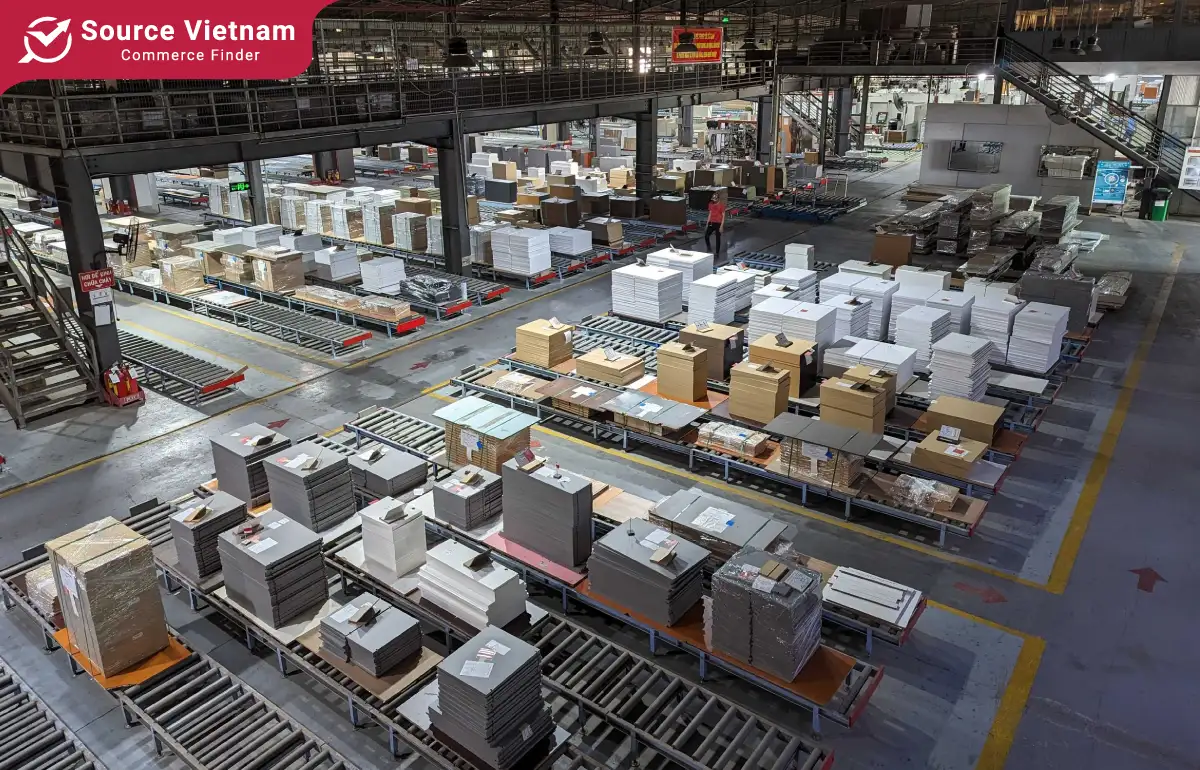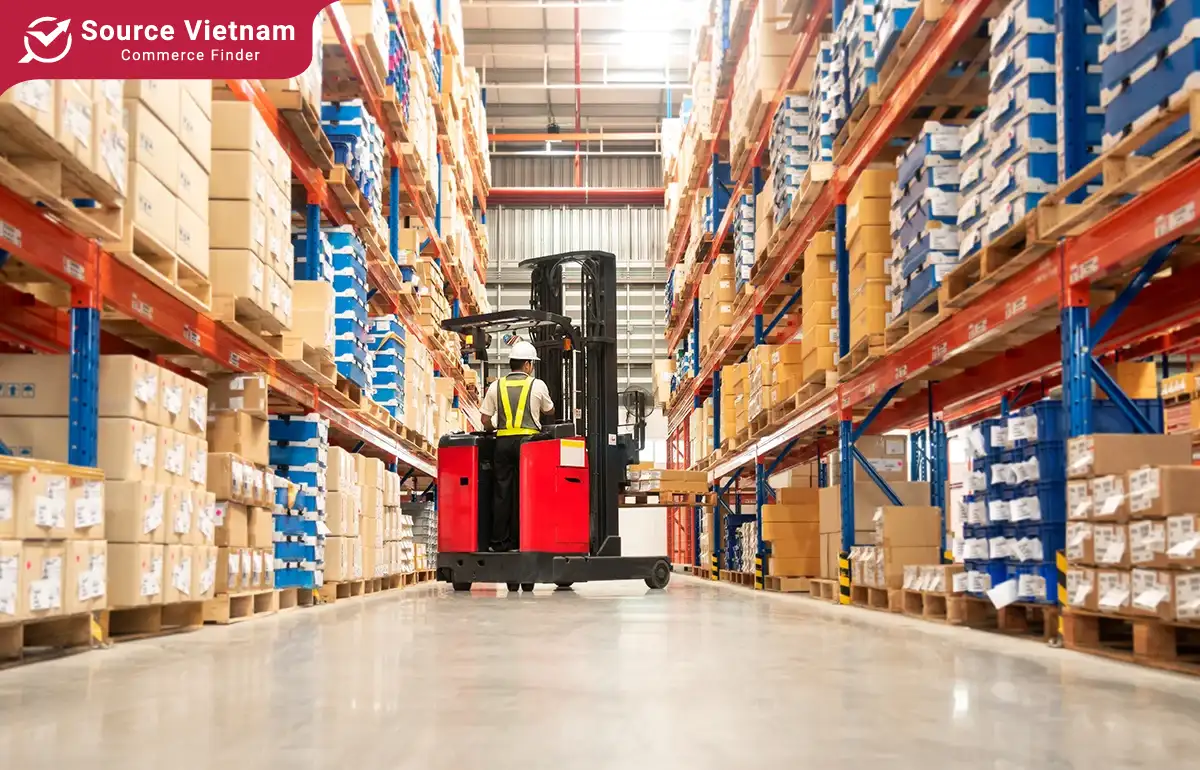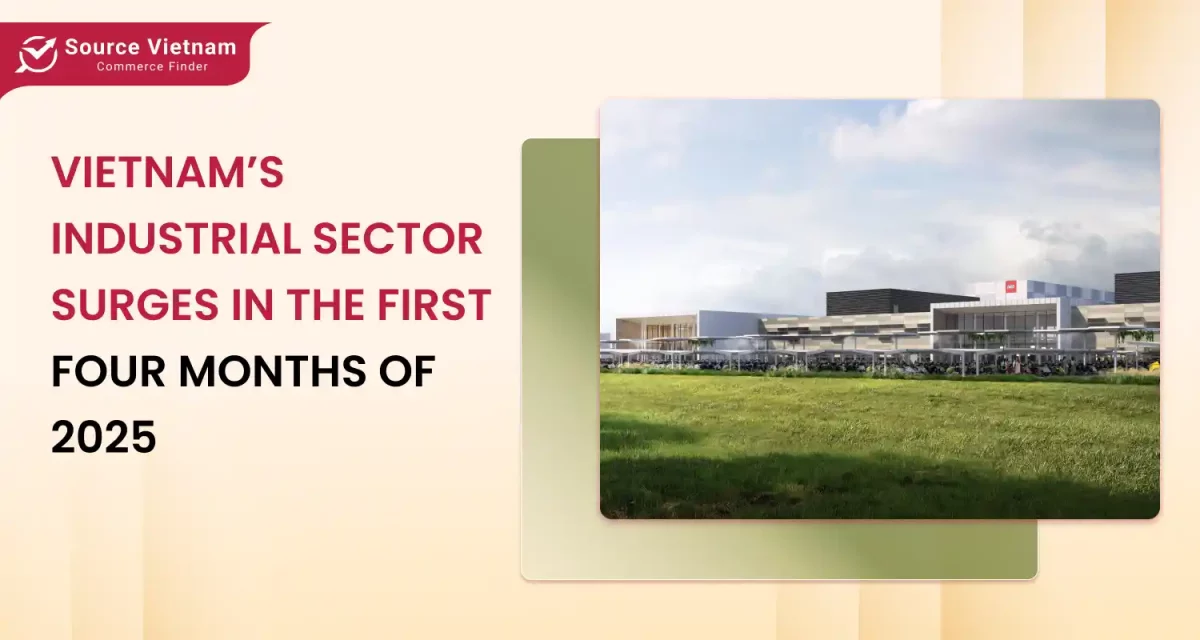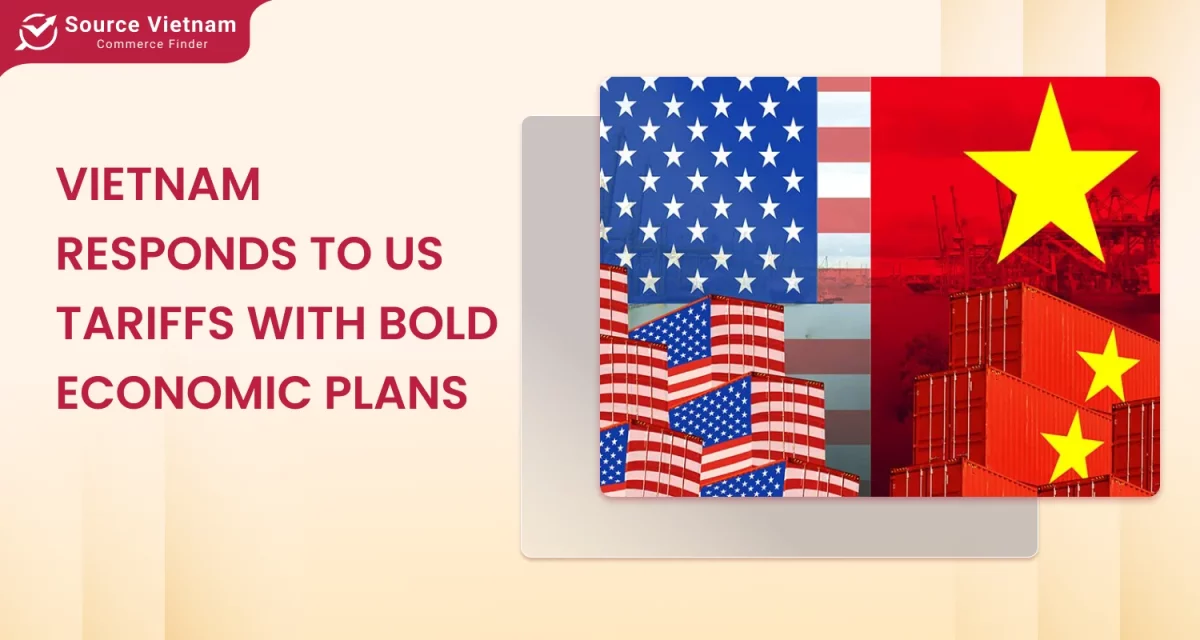Insight:
- Vietnam’s warehousing rental market is experiencing robust growth and exhibits significant potential for development.
- Several factors contribute to this market expansion, yet certain challenges persist.
Overall market trends
Vietnam’s warehousing market is experiencing rapid growth, driven by substantial foreign direct investment and the surging demand for e-commerce. Concurrently, the development of Chinese warehouses near the Vietnam-China border is reshaping cross-border trade dynamics, intensifying competition for both domestic and foreign businesses.

In recent years, Vietnam has solidified its position as a significant player in the global e-commerce arena, propelled by a burgeoning online retail sector and rising consumer demand. A critical infrastructure component of this expansion is modern warehousing facilities. These facilities are not only essential for efficient storage and distribution but also for managing the complex logistics involved in cross-border trade.
As e-commerce continues to flourish, Vietnam’s warehousing market has undergone a significant transformation. By the end of 2023, foreign developers had gained a dominant presence in this market, leveraging substantial investments to reshape the landscape with advanced warehousing solutions aimed at enhancing logistics efficiency.
A notable development impacting the sector is the construction of large-scale e-commerce warehouses by Chinese companies near the Vietnam-China border. This initiative is designed to boost cross-border trade and facilitate the seamless movement of goods between the two countries. China’s approach is indicative of a broader regional trend, impacting both domestic and international market dynamics.
This article explores the current state of Vietnam’s modern warehousing market, the impact of Chinese warehousing developments on regional trade, and the future implications for warehousing and logistics in Vietnam. By understanding these trends, stakeholders can better navigate the evolving landscape and seize new opportunities in e-commerce logistics.
Vietnam’s modern warehousing landscape
Vietnam’s modern warehouse market is experiencing significant expansion, primarily driven by international investors. According to FiinGroup Vietnam, by the end of 2023, foreign entities controlled over 75% of the leased warehouse and factory space, significantly outpacing domestic companies with around 25% of the market. This dominance highlights the rapid growth and increasing importance of the warehouse sector in Vietnam’s logistics industry.

The Vietnamese warehouse market has witnessed impressive growth, with the modern logistics industry utilizing approximately 3.9 million square meters of space by the end of 2023. From 2020 to 2023, the sector achieved a remarkable compound annual growth rate of 23 percent.
This trend is expected to continue, with an anticipated annual growth rate of around 7 percent until 2027. This growth is fueled by robust trade, manufacturing, and retail activities, positioning warehousing as a critical segment of Vietnam’s logistics infrastructure.
Modern logistics facilities in Vietnam are primarily concentrated in five major provinces: Binh Duong, Long An, Bac Ninh, Hung Yen, and Dong Nai. These regions are becoming hubs for warehousing and logistics, catering to the industry’s growing demands. Some key characteristics of the Vietnamese warehouse rental market include:
- Concentration in key regions: Provinces like Binh Duong, Long An, Bac Ninh, Hung Yen, and Dong Nai are home to numerous modern warehouses.
- Foreign investor involvement: Foreign investors are increasingly interested in Vietnam’s warehouse rental market, contributing to improved service quality and technology.
- Demand for modern warehouses: Customers are increasingly demanding warehouses with modern management systems and advanced technology to ensure operational efficiency and cargo safety.
- Intensifying competition: The growing number of warehouse service providers is leading to increased competition in terms of pricing and service quality.
Investment landscape in Vietnam
Among the leading foreign investors, Mapletree, BW Industrial, and SLP collectively manage nearly 46% of the modern warehouse leasing area. In contrast, the top three domestic enterprises—ICD ST, NPL Logistics, and Gemadept—control approximately 10.6% of the space. This disparity highlights the significant role of foreign investment in shaping the current market landscape.
Looking ahead, around 25 new warehouse projects are planned from now until 2027, adding approximately 1.87 million square meters of space. Mapletree is also expanding its warehouse portfolio across Bac Ninh, Hung Yen, and Binh Duong, with each location comprising 12 to 24 warehouses. Similarly, BW Industrial and NPL Logistics are ramping up their operations with 22 new warehouses across both Northern and Southern Vietnam.

To meet the growing demand and investor interest, local governments in Long An, Dong Nai, and Bac Giang are preparing to expand their industrial zones. These expansions aim to attract more investment and support the industry’s development.
Impact on cross-border commerce
The proliferation of large-scale warehouses is expected to revolutionize cross-border e-commerce by enabling faster delivery times and reducing logistics costs. With these new infrastructure developments, Chinese products can now reach Vietnamese consumers with unprecedented speed and efficiency, often matching or exceeding domestic delivery times.
This expedited shipping capability can enhance market access for Vietnamese exporters, allowing them to tap into new opportunities while providing consumers with a broader range of products. However, it also introduces competitive challenge as Chinese goods flood the market, posing potential hurdles for local businesses struggling to compete on price and delivery speed.
The robust growth of Vietnam’s warehouse rental market is having a profound and multifaceted impact on cross-border commerce. Below are some notable effects.
- Fast shipping: The modern, widespread warehouse system significantly reduces shipping time, meeting the consumers’ demand for speedy delivery.
- Reduced logistics costs: Leveraging transit warehouses and storage facilities near populated areas minimizes shipping, storage, and inventory management costs.”
- Reaching new customers: Businesses can easily access customers in various regions through the extensive warehouse network.
- Enhanced competitiveness: Fast and cost-effective delivery enables Vietnamese businesses to better compete with imported products.
- Supporting infrastructure: A modern warehouse system is a crucial foundation for e-commerce development, especially for online retail models.
- Product diversification: Warehouses can store and distribute a wide range of products, meeting diverse consumer shopping needs.
- Favorable business environment: The development of the warehouse system indicates a conducive business environment, attracting both domestic and foreign investors.
- Complete logistics infrastructure: A modern logistics system is a key factor in attracting manufacturing and service businesses.
- Scale expansion: Logistics businesses can expand their operations and invest in new technologies.
- Service diversification: Businesses can provide a variety of value-added services such as packaging, labeling, and inventory counting.
Competitive landscape and market dynamics
The surge in large-scale warehousing activities by Chinese companies near the border is likely to intensify competition in Vietnam’s warehousing market. These developments could disrupt both domestic and international competitive dynamics, as the influx of cheaper Chinese goods and efficient logistics puts pressure on domestic warehouses and e-commerce businesses.

For Vietnamese warehouse developers, this situation presents both opportunities and challenges. While there is potential to benefit from increased trade volumes and investment in local warehousing infrastructure, there is also a risk of losing market share to more efficient and cost-effective Chinese competitors.
There are numerous factors driving the warehouse rental market, among which some prominent elements can be mentioned:
- Growth of e-commerce: The boom in e-commerce has created a huge demand for distribution centers and smaller warehouses to serve the need for fast delivery.
- Manufacturing development: Attracting foreign investment and the development of industrial zones have increased the demand for warehouses to store raw materials and finished products.
- Infrastructure improvement: Investment in transportation infrastructure, seaports, and airports has facilitated the transportation of goods and the development of logistics centers.
- Government support policies: The Vietnamese government is implementing many policies to encourage investment in the logistics sector, creating a favorable business environment for enterprises.
Challenges in Vietnam’s warehouse rental market
The Vietnamese warehouse rental market is experiencing rapid expansion, driven by factors such as the growth of e-commerce, manufacturing, and logistics. However, this growth is accompanied by several significant challenges that businesses must navigate:
- Market saturation: The increasing number of industrial parks, logistics hubs, and e-commerce ventures has led to a saturated market characterized by intense price competition and a race to offer superior services.
- Diverse warehouse typology: The proliferation of specialized warehouses such as cold storage, general storage, and transit warehouses has complicated the decision-making process for businesses and intensified competition.
- Skilled labor scarcity: The logistics sector demands a highly skilled workforce proficient in warehouse management, system operations, and IT.
- Talent acquisition and retention challenges: The industry faces difficulties in recruiting and retaining skilled professionals due to relatively low compensation packages and working conditions.
- Infrastructure bottlenecks: Inadequate transportation infrastructure in certain regions hampers goods’ movement and drives up logistics costs.
- Regional disparities: Central locations often command higher rental rates, while suburban areas may suffer from poor connectivity.
- Technological imperative: Businesses are under pressure to invest in technology to enhance operational efficiency and reduce costs, given the highly competitive landscape.
- Capital intensity: The adoption of automation and advanced technologies requires substantial capital investment, which can be prohibitive for smaller enterprises.
Opportunities for foreign investors in Vietnam’s warehouse market
Vietnam’s logistics sector, particularly its warehousing market, is offering promising opportunities for foreign investors due to the country’s rapid economic growth and strategic location in Southeast Asia. According to Article 4 of Decree 163/2017/ND-CP, foreign investors can participate in various logistics services, including warehousing, under specific conditions.

For example, foreign investors can establish or invest in companies providing container handling services or other warehouse-related activities with a capital contribution of up to 50%. This allows foreign entities to participate in and benefit from the growing demand for efficient warehousing solutions in Vietnam.
Furthermore, the Vietnamese government is keen to attract foreign investment in logistics, including warehousing, to support the country’s growing trade and economic activities. Foreign investors can establish joint ventures, contribute capital, or purchase shares in local logistics companies.
With a favorable investment environment, modern infrastructure, and Vietnam’s increasing trade volume, there is significant potential for foreign investors to capitalize on the thriving warehousing market. By leveraging local partnerships and complying with legal requirements, investors can participate in Vietnam’s logistics sector and contribute to its dynamic growth trajectory.
Conclusion
The Vietnamese warehouse rental market is facing both new opportunities and challenges. The growth of e-commerce and manufacturing has driven the demand for modern warehousing space. To achieve sustainable development, businesses need to continuously innovate, adopt modern technology, and build strong partnerships. The government needs to have appropriate support policies to create a favorable business environment, attract investment, and develop a high-quality workforce for the industry.














